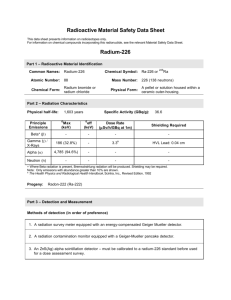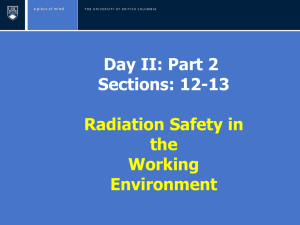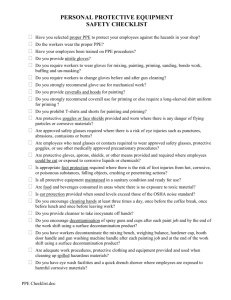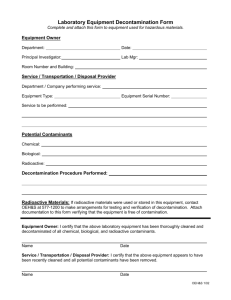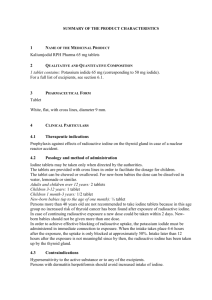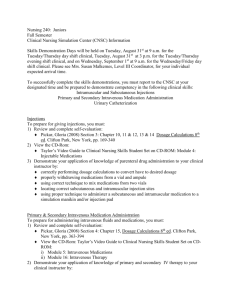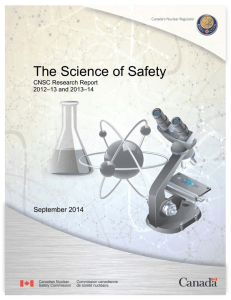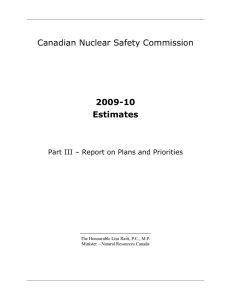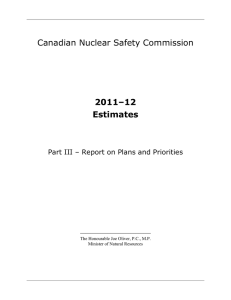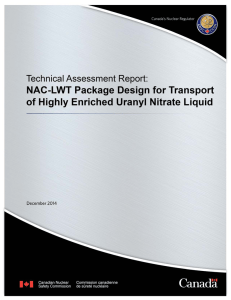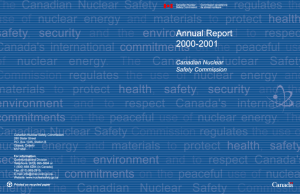Iodine
advertisement
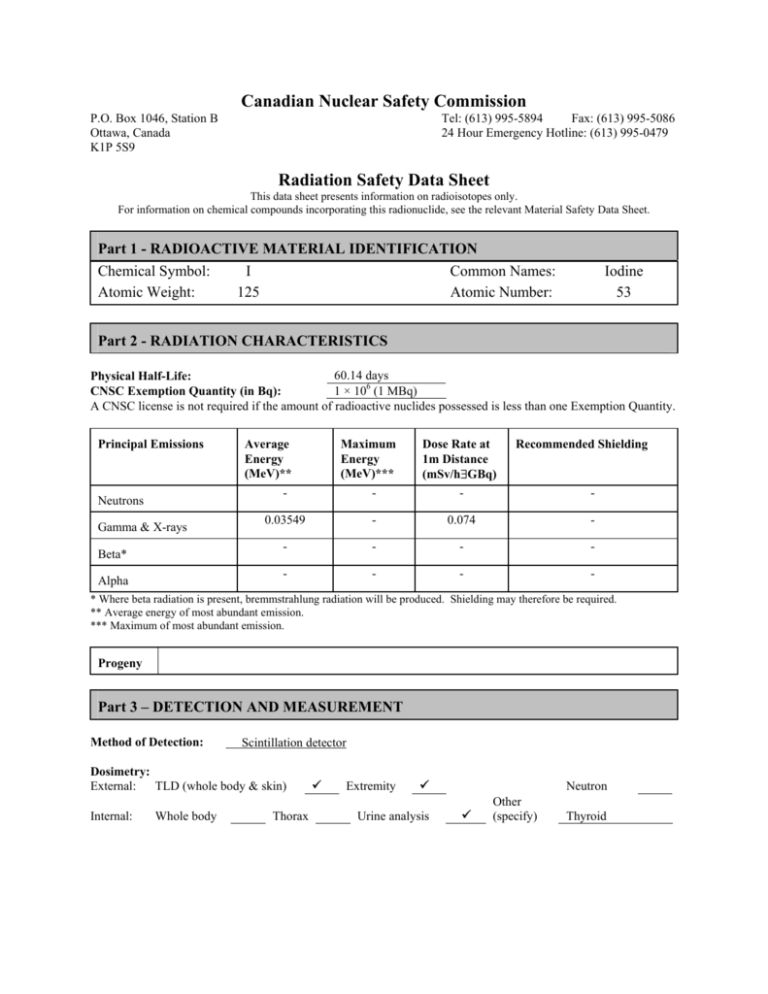
Canadian Nuclear Safety Commission P.O. Box 1046, Station B Ottawa, Canada K1P 5S9 Tel: (613) 995-5894 Fax: (613) 995-5086 24 Hour Emergency Hotline: (613) 995-0479 Radiation Safety Data Sheet This data sheet presents information on radioisotopes only. For information on chemical compounds incorporating this radionuclide, see the relevant Material Safety Data Sheet. Part 1 - RADIOACTIVE MATERIAL IDENTIFICATION Chemical Symbol: I Common Names: Atomic Weight: 125 Atomic Number: Iodine 53 Part 2 - RADIATION CHARACTERISTICS 60.14 days Physical Half-Life: 1 × 106 (1 MBq) CNSC Exemption Quantity (in Bq): A CNSC license is not required if the amount of radioactive nuclides possessed is less than one Exemption Quantity. Principal Emissions Neutrons Gamma & X-rays Beta* Alpha Maximum Energy (MeV)*** Average Energy (MeV)** Dose Rate at 1m Distance (mSv/h∃GBq) Recommended Shielding - - - - 0.03549 - 0.074 - - - - - - - - - * Where beta radiation is present, bremmstrahlung radiation will be produced. Shielding may therefore be required. ** Average energy of most abundant emission. *** Maximum of most abundant emission. Progeny Part 3 – DETECTION AND MEASUREMENT Method of Detection: Scintillation detector Dosimetry: External: TLD (whole body & skin) Internal: Whole body Thorax 9 Extremity 9 Urine analysis Neutron 9 Other (specify) Thyroid Part 4 - PREVENTATIVE MEASURES Exposure to significant amounts of radioiodine increases risk of developing thyroid cancer. Iodine is toxic by ingestion and inhalation and a strong irritant of eyes and skin. Iodine can be absorbed through the skin. When iodinated (I -125) albumin injection is heated to decomposition, radioactive fumes containing I -125 may be emitted. Recommended protective clothing: Disposable plastic, latex, or rubber gloves. Wear a lab coat, which must be monitored before leaving the laboratory. Also wear safety glasses. Some iodine compounds can penetrate surgical rubber gloves. Wear two pairs, or polyethylene gloves over rubber. Minimise handling time. Use syringe shields and tongs. When possible handle iodine compounds in a fume hood. Consult CNSC license for requirements concerning engineering controls, protective equipment, and special storage requirements. Part 5 - ANNUAL LIMIT ON INTAKE Ingestion Inhalation Compound Type All compounds All compounds Annual Limit on Intake (Bq) 1 × 106 1 × 106 EMERGENCY PROCEDURES The following is a guide for first responders. The following actions, including remediation, should be carried out by qualified individuals. In cases where life threatening injury has resulted, first treat the injury, second deal with personal decontamination. Personal Decontamination Techniques Χ Wash well with soap and water and monitor skin Χ Do Not abrade skin, only blot dry Χ Decontamination of clothing and surfaces are covered under operating and emergency procedures Spill and Leak Control Χ Alert everyone in the area Χ Confine the problem or emergency (includes the use of absorbent material) Χ Clear area Χ Summon Aid Emergency Protective Equipment, Minimum Requirements Χ Gloves Χ Footwear Covers Χ Safety Glasses Χ Outer layer or easily removed protective clothing Χ Suitable respirator selected Revision number: 1 Date of revision: 1 September 2004

